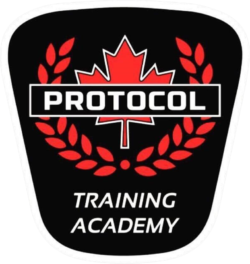Tactical Communication & De-Escalation:
- De-Escalation Myths vs Reality
- Why Force is Used
- Expectations of Authority Figures
- Unintended Messages
- Verbal Resistance
- Acknowledging Emotions
- Embrace the Challenge of Resistance
- Third Party Conflict Resolution
- Verbal and Non-Verbal Communication
- Barriers to Listening
- Strategic Questioning
- Paraphrasing
- Mirroring
- Applying Communication Tactics
- Identifying Precipitating Factors
- Persuasion
- Communication Tips
- Tactical Deception
- Things to Avoid Saying
- Handling Verbal Abuse
- Using Contrast for Influence
- Confirmation Prior to Action
- Crisis Intervention
- Tactical Communication vs Crisis Intervention
- Mental Health Recognition and Threats
- Dealing with People with Mental Health Issues including Drugs and Alcohol
- Fear and Stress in Confrontation
Use of Force and Conflict Avoidance
Situational Awareness:
- Three Levels of Mental Preparedness
- Assessment Process
- Pattern Recognition
- Human Response to Violence - Fight, Flight, Freeze, Posture, Submit
- Baselines
- Anomalies
- Kinesics
- Pre-Assault Cues
- Class Exercise
- Biometric Cues
- Environmental Cues
- Time and Distance
- What-If-Then Thinking
- Characteristics of Armed Individuals
- Characteristics of Edged Weapon Attacks
- Threat Profiling vs Racial Profiling
Tactical Decision Making:
- Weapons, Numbers and Tactics
- The Tactical Battle
- Position of Advantage
- Interview Stance
- Tactical Flashlight
- Contact/Cover
- Visual Scanning
- One Plus One Doctrine
- Environmental Cues
USE OF FORCE FACTORS AND THE CRIMINAL CODE:
- Substance Abuse and Risk Assessment
- Fear: Dealing with it Before, During and After – How to Use it to Produce Productive Responses
- Stress and Coping
- Focusing on the Controllable Things
- Importance of Body Language
- How to Detach After the Event
- Security Officer Confrontational Model
- Levels of Confrontation and Self Defense
- Relevant Circumstances that Assist in Determining Reasonableness
- Positional Asphyxia
- Excited Delirium
- Articulating Use of Force Incidents
- Contact and Cover
- Emotional vs Logical Decision Making
Terrorism and Homicides in Progress:
- What is a Homicide in Progress (H.I.P.)
- Motives for H.I.P.
- Identifying H.I.P.
- Weapons used
- Why get training
- Typology of Attackers (Terrorists, Emotionally Disturbed, Domestic Related)
- Some Options You Need to Understand
- Cover
- Medical Assistance
- Concealment
- Lock Down
- Barrier
- Movement
- Escape
- Fight
- Awareness
- Explosives
- Blast Waves
- Preventative Measures
- What To Do?
- Testing your Responses
- Suspicious Packages
- HVAC System
- Drones
- Manitoba Case
- Personal Characteristics
- What is YOUR role?
- Organized Group
- Unorganized Group
- Weapons, Numbers, Tactics
- Police Arrive – Now What?
- Reality Based Training
- Additional Prevention
REGISTER FOR A COURSE NOW!
Online training means you begin training as soon as you register. You will learn at your own speed and complete the course(s) at your own pace. You can access your course(s) 24/7, day or night, 7 days a week and once when you are ready, you may take the applicable quiz/exam.
